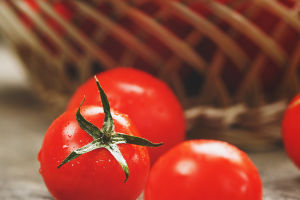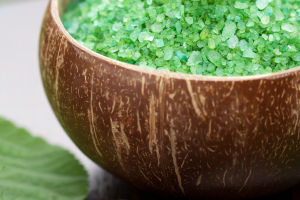"Rose salt" is a unique seasoning you might find on your dining table, known for its special taste and appearance.
However, when it comes to health and nutrition, it doesn't offer any significant advantages.
Himalayan rose salt originates from salt mines primarily located in the Pakistani region.
This salt is distinguished by its pink color, which results from high iron and mineral content, hence the name "rose salt."
Unlike refined salt, commercial rose salt remains unprocessed, preserving its minerals, color, and larger particles. To put it simply, rose salt is unrefined, coarse, and pinkish-red with various impurities.
While rose salt does contain somewhat more iron and calcium compared to refined salt, the quantity per gram remains relatively low, measured in milligrams. Furthermore, the absorption of these minerals is not guaranteed, making rose salt an inadequate source for mineral supplementation.
These essential minerals can easily be obtained from a balanced daily diet, rendering it unnecessary and ineffective to rely on coarse salt for supplementation.
Additionally, rose salt lacks iodine fortification, posing a risk of iodine deficiency if used as a substitute for refined salt.
Surprisingly, the sodium content in coarse salt is not significantly different from that in refined salt.
According to data provided by some merchants, rose salt contains about 38.26% sodium, which is only slightly lower than the theoretical sodium content in pure table salt (39.36%).
This minor difference doesn't have much impact on reducing overall sodium intake.
To prevent clumping, refined salt typically contains anti-caking agents, with potassium ferrocyanide being a commonly used one.
You might wonder, "Doesn't cyanide symbolize toxicity?" In reality, although potassium ferrocyanide belongs to"cyanide," it doesn't break down into toxic substances when consumed by humans or animals.
Some may raise concerns about the potential harm from excessive intake, but the amount of potassium ferricyanide we encounter daily through table salt is well below the safe upper limit established by international standards.
This substance can undergo thermal decomposition, with a decomposition temperature of 400°C.
However, during cooking, even in methods like deep-frying or stir-frying, the temperature inside the pan typically doesn't exceed 200 degrees Celsius.
Moreover, in actual cooking, the temperature of the salt mixed with the food is even lower than the oil temperature. Therefore, there's no need to worry about it "thermally decomposing" and releasing toxic cyanides.
Because rose salt lacks iodine fortification, it's not a suitable replacement for iodized salt in everyday cooking.
However, rose salt has various other uses. It can be transformed into mineral salt lamps, which release negative ions, improve air quality, absorb moisture, and are favored by people who enjoy spa aromatherapy and meditation.
Rose salt can also serve as a bath salt, purifying the skin, promoting skin metabolism, and relieving nervous tension.


